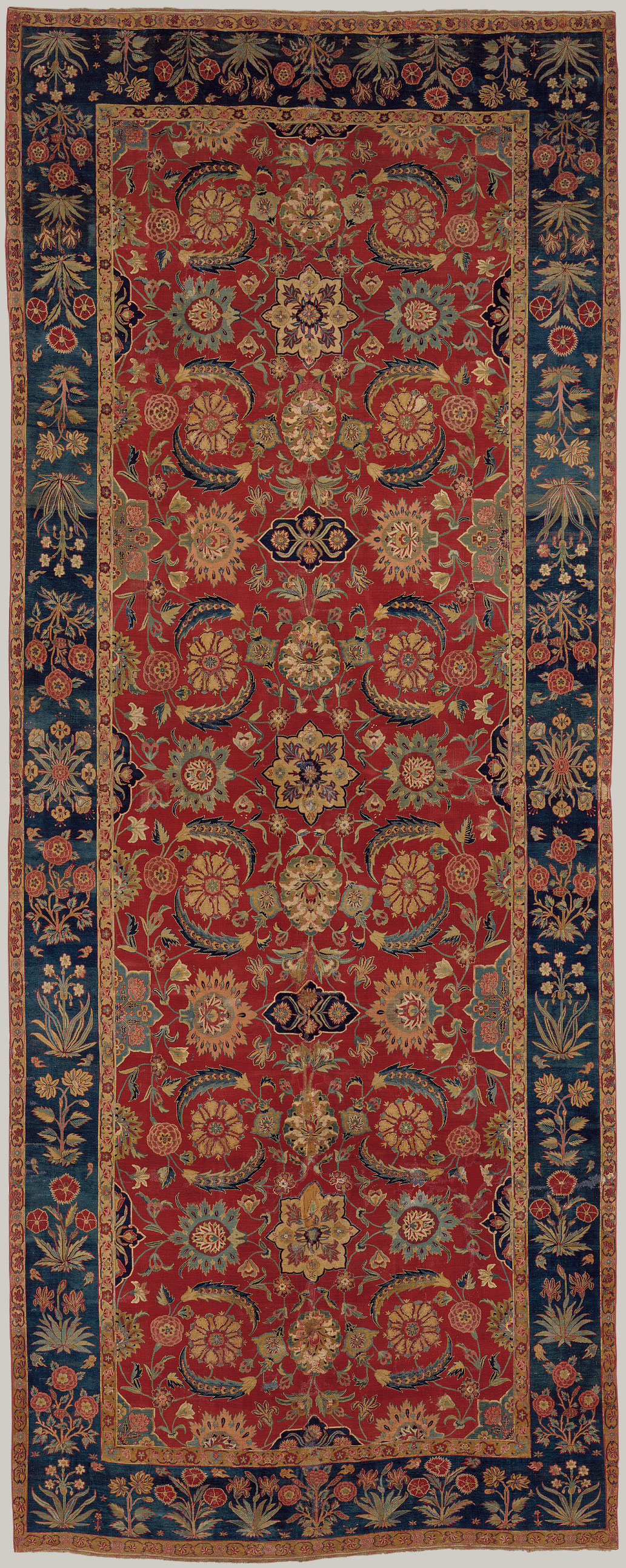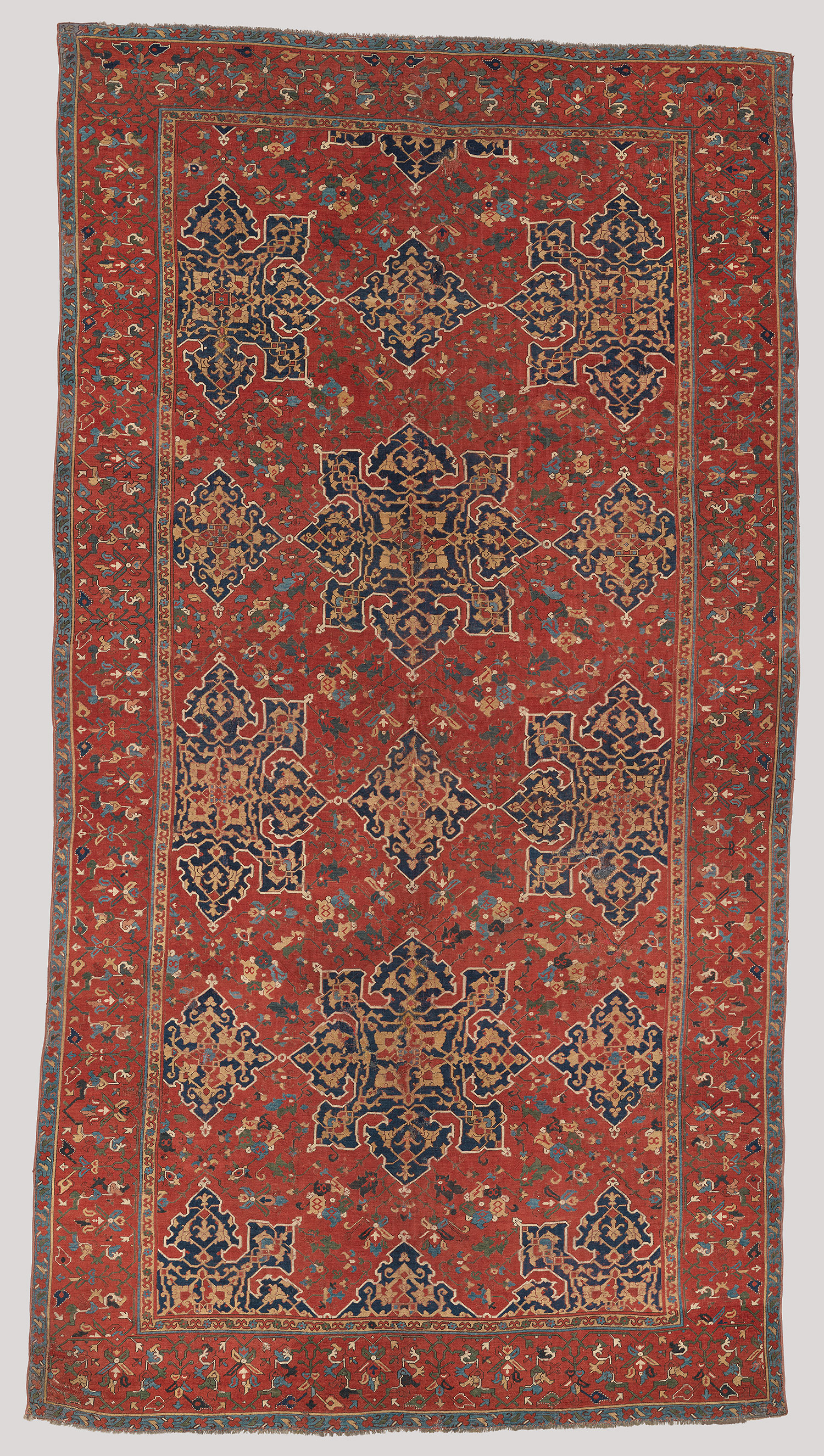More links for you today on carpets.
A lovely intro to the Islamic art style is here on a V&A microsite.
I’ve never found this site before – why do they seem to hide them away?
An introduction to Islamic Carpets can be found here.
Below are a few examples of the very best from the C16-C17th.
"Star Ushak" carpet, Ottoman period, late 15th century
Turkey
Wool (warp, weft, and pile); symmetrically knotted pile
L. 166 in. (421.6 cm), W. 91 1/2 in. (232.4 cm)
My brain is already seeing some of these designs interpreted in a contemporary textile way.
The girls who went to Grasmere will know what I mean…. think J&J…..
Vegetal patterns were seen throughout the areas under study and in pre-Islamic times were very naturalistic, becoming more stylized and abstracted in the 11th-13th centuries then returning to a more naturalistic style - with Chinese influences. By the early 16th century ornamentation in the Ottoman Empire is naturalistic with tulips, rose buds, carnations depicted. You can see more on this here. The Mughal empire loved its flowers of course.
A truly wonderful carpet is in the V&A Museum, London.
The Ardabil Carpet
-
Iran.ca. 1539-1540 (made)
Hand knotted woollen pile, on silk warp and weft; asymmetrical knot, open to the left; average of 340 knots per sq. in (average of 5300 per sq. dm)
And if you thought that was good….

Carpet with scrolling vines and blossoms, Mughal period, ca. 1650
Northern India or Pakistan, Kashmir or Lahore
Silk (warp and weft), pashmina wool (pile); asymmetrically knotted pile
L. 163 3/4 in. (415.9 cm), W. 66 in. (167.6 cm)
Can you imagine over a thousand knots per inch? That’s how some of these carpets are constructed.




No comments:
Post a Comment